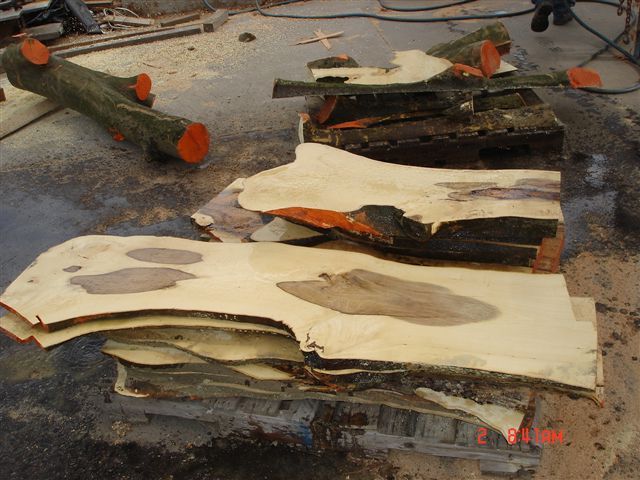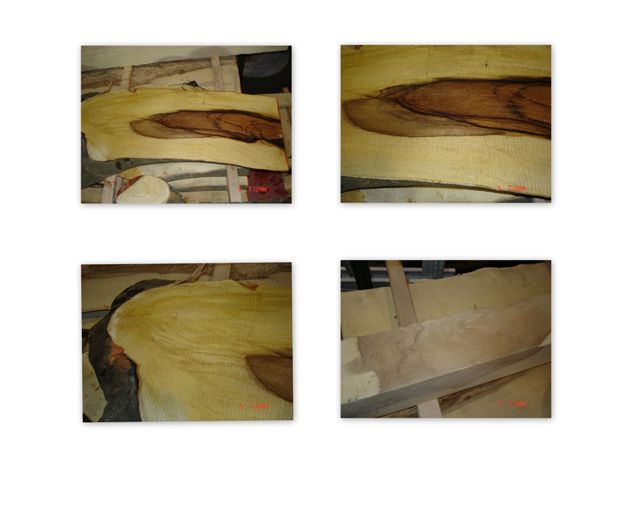Question
I have been given 20 acres of very old growth Valencia and navel orange trees. The orchard has some disease within it, and the grower is forced to remove the entire grove.
The trees are about 16" to 24" diameter at the stump. Most stumps will be from 2.5' to 4' tall. There also many large branches about 6" to10" diameter and possibly as much as 7' or 8' in length. I have a Wood-Mizer lined up to cut the harvested wood into lumber.
The orchard is to be removed next week, and the stumpage/trees to be ground up and fed into a bio-furnace.
I can take all I wish, but I have no real experience with this lumber. I must harvest within the next 5 days! Should I load up or should I pass? The trees are about 150 miles north of LA, California.
Forum Responses
(Sawing and Drying Forum)
From contributor T:
I can't find a single reference to the characteristics of the wood. If I were in your shoes and didn't determine it isn't worth the effort, I would roll the dice and get as many as I could. I have never seen ugly wood, so I think the risk vs. reward is tilted in your favor.
How many times do you get the chance to harvest orange trees? I would probably grab them even if someone told me the wood is not worth firewood. But that's how I am - often choosing to go against the grain. It doesn't usually pay off, but when it does, it more than makes up for all the times it didn't. I say hook up your trailer, grab a buddy and some end sealer, and hit the road.
At the shop, I played with a small piece. The wood is light with gentle graining. When cutting, I got a whiff of cucumber. I will take the two logs to the sawyer tomorrow.
By the way, one log is 16" D x 7' and the other is 17" D x 11'. Of course, the "D" was measured at three feet above the ground. The 11' ft long log had tapered down to 9" D. I have the opportunity to return next Saturday for more of these large logs.

I have found nothing to tell me the wood has any fantastic value. To date, the cost has been well over $10/bd ft just to get the trees harvested, hauled, and milled. If my time is worth anything, I would have to add two days of my worth to the equation.
As for the location for drying, I have no options except my commercial building. I live in California and must endure the "recyclers" who have the rights to anything they can carry away at night. So I must dry within my business warehouse, or forget the effort. I have not had a negative experience with drying inside.
The picture is not of flitches, but of 4/4 slabs cut with an LT40 Wood-Mizer.
I took a picture of a 4" x 4" x 5' and several of one piece of crotch. The crotch wood was wet with water to enhance the grain.

While terms vary from region to region and slang is often used, a flitch has at least one live edge and generally is thought to have both. "Flitch sawn" is a term used to describe the method to produce a flitch or flitches, which is also referred to as sawing through-and-through.
If you saw the entire log through-and-through from start to finish you end up with a boule. Boule cutting was George Nakashima's favorite way to take a log apart. I do it frequently as well.
A slab is the first cut off the log that has one face and no edges. You can get up to four slabs off a log, and after that you start getting flitches unless you square the log into a cant, which will produce lumber. Some of the first few pieces of lumber off the cant can have some wane but that won't necessarily make it a flitch; it does preclude it from being a slab though since it has more than one face and at least one edge.
This is my current understanding of the two terms anyway, and as always I welcome any corrections. I also realize the use of a word can be so ingrained in a region that it is essentially the official meaning, whereas it means an entirely different thing just a state or two over.